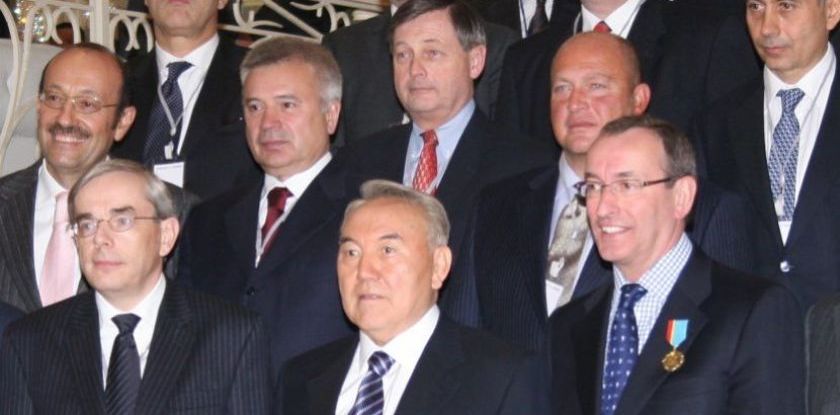Last year, two systemic events took place in the banking system of Kazakhstan. The significance of the first one was clear to all from the very beginning. The second one, on the other hand, even though it had indeed been noticed by the market and the media, was nonetheless discussed as an ordinary occurrence.
The first event was Kazkommertsbank’s rescue by the state via the 2.64 trillion tenge infusion followed by the sale of Halyk Bank for only 2 tenge one of which was received by Kenes Rakishev, the other one – by the Samruk-Kazyna Fund. As a result, Halyk Bank has de-facto been transformed into the “supra-systemic” bank occupying the quasi-monopolistic position in the country’s banking system.
The second event refers to Korean Kookmin Bank’s exit from Bank TsentrCredit and, therefore, from Kazakhstan. This event happened in the first half of 2017. On February 1, the bank’s shareholder Bakhytbak Bayseitov and the Tsesna Financial Holding published a joint statement about purchasing 41.93% of the Bank TsentrCredit shares from Kookmin Bank and 10% of the shares – from International Finance Corporation (IFC). On the Bank TsentrCredit website, we could not find any information on when the aforementioned deal was completed. However, from the media announcements, it follows that it happened in March/April 2017. As of today, Bakhytbek Nayseitov, Tsesnabank, and the Tsesna Financial Holding are listed as the bank’s shareholders.
Why do we call these events systemic, in other words, why so we equate them even though, in term of the state support and the direct influence on the financial market, are clearly incomparable?
In the first case, the state had made the ultimate choice – instead of rescuing the country’s banking system, it began to save individual banks. In this particular case, it saved the financial institute belonging to Nazarbayev’s closest relatives.
The second event is, too, of the systemic nature because Kazakhstan was exited by the last foreign investor who came to the country as a result of the 2002-2007 economic rise and the banking boom that accompanied it. Note that Kookim Bank completed the purchasing of 23% of Bank TsentrCredit shares for half a billion dollars on August 27, 2008 when the world financial crisis had already begun but it was still unclear what its depth and scale were going to be.
Thus, in 2017, the exit of the foreign banking groups from developed markets who came to the country before 2008 from the banking system of Kazakhstan was completed. The reasons are clear – the banking business has become low-profit (if not lossmaking) while all the risks have increased and the three tenge devaluations have significantly devalued the capital and, therefore, the resources invested in it.
As a result, the banking groups from Russia have remained and even increased their presence in Kazakhstan. We believe it happened mainly because they are, first, have experience in working in the countries with a similar authoritarian political system and in the economic environment where the state and the quasi-state agencies are dominant. Second, their management is not as tightly bound by the publicly declared corporate norms as the Western banks usually are. Third, they can always count on Kremlin’s support.
Therefore, we believe it is highly unlikely that Prime Minister Bakytzhan Sagintayev’s heavy activity on attracting investors from the developed countries will be even one bit successful. Usually, the Western investor comes to a country in a big way only when the familiar banking service accompanies the business possibilities and the reasonable sovereign risk.
In Kazakhstan, they will have to receive service in the financial institutes belonging to Nazarbayev’s blood relatives and his closest allies, in other words, the people untouchable in the Kazakhstan courts. Another option is the affiliated structures of the Russian banking groups that, due to the ongoing conflict between Russia and the West, can find themselves under the sanctions any moment. Thus, the foreign investor will constantly be taking risks, from the moment of investing the money to the point of their complete return and at all the stages of the business-process. And this may be a little too much for the normal investor.




